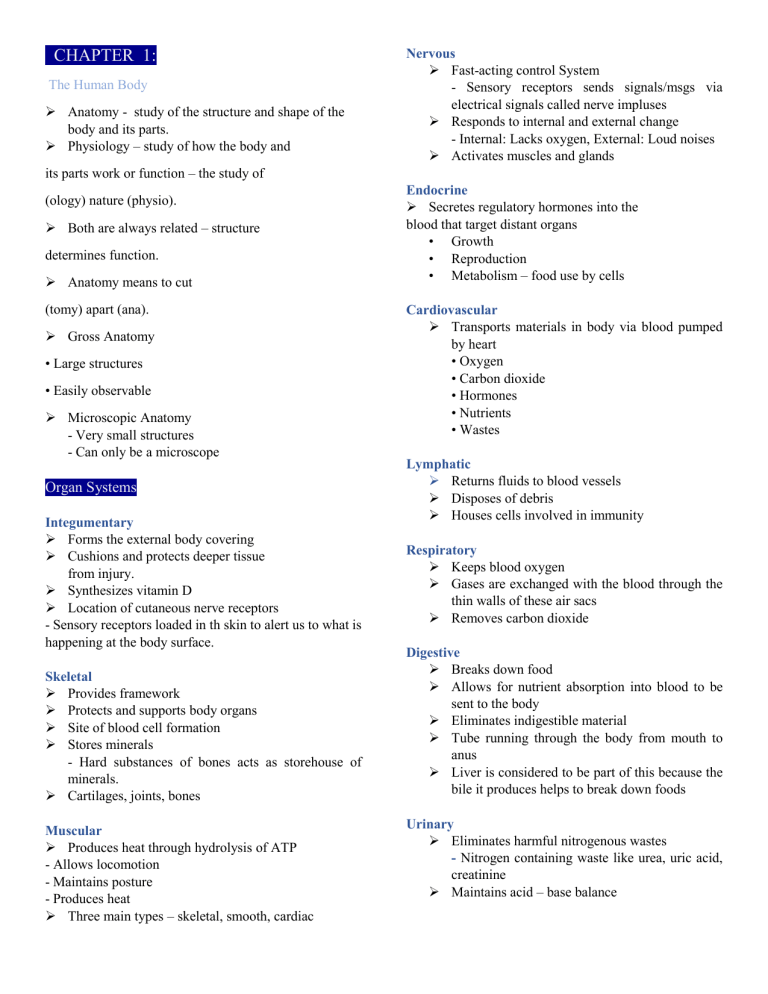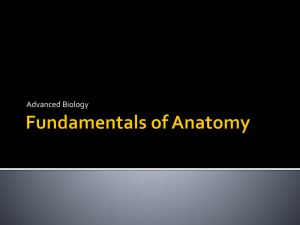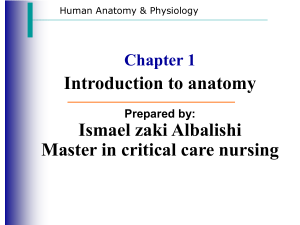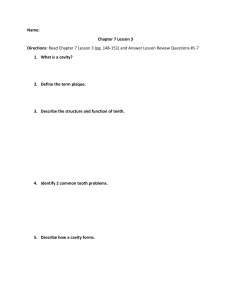
CHAPTER 1: The Human Body Anatomy - study of the structure and shape of the body and its parts. Physiology – study of how the body and Nervous Fast-acting control System - Sensory receptors sends signals/msgs via electrical signals called nerve impluses Responds to internal and external change - Internal: Lacks oxygen, External: Loud noises Activates muscles and glands its parts work or function – the study of (ology) nature (physio). Both are always related – structure determines function. Anatomy means to cut (tomy) apart (ana). Gross Anatomy • Large structures • Easily observable Microscopic Anatomy - Very small structures - Can only be a microscope Organ Systems Integumentary Forms the external body covering Cushions and protects deeper tissue from injury. Synthesizes vitamin D Location of cutaneous nerve receptors - Sensory receptors loaded in th skin to alert us to what is happening at the body surface. Skeletal Provides framework Protects and supports body organs Site of blood cell formation Stores minerals - Hard substances of bones acts as storehouse of minerals. Cartilages, joints, bones Muscular Produces heat through hydrolysis of ATP - Allows locomotion - Maintains posture - Produces heat Three main types – skeletal, smooth, cardiac Endocrine Secretes regulatory hormones into the blood that target distant organs • Growth • Reproduction • Metabolism – food use by cells Cardiovascular Transports materials in body via blood pumped by heart • Oxygen • Carbon dioxide • Hormones • Nutrients • Wastes Lymphatic Returns fluids to blood vessels Disposes of debris Houses cells involved in immunity Respiratory Keeps blood oxygen Gases are exchanged with the blood through the thin walls of these air sacs Removes carbon dioxide Digestive Breaks down food Allows for nutrient absorption into blood to be sent to the body Eliminates indigestible material Tube running through the body from mouth to anus Liver is considered to be part of this because the bile it produces helps to break down foods Urinary Eliminates harmful nitrogenous wastes - Nitrogen containing waste like urea, uric acid, creatinine Maintains acid – base balance Regulation of materials - Water - Electrolytes – salts Reproductive Production of offspring Testes and ovary produces sperm and egg cells Body Cavities Two subdivisions of dorsal body cavity - Cranial cavity - Spinal Thoracic cavity protects lungs and heart Diaphragm divides the left and rights cavity Abdominal cavity protects reproductive organs, bladder Water 60–80% of body weight Nutrients Chemicals for energy and cell building Includes carbohydrates, proteins, lipids (fats), vitamins, and minerals





